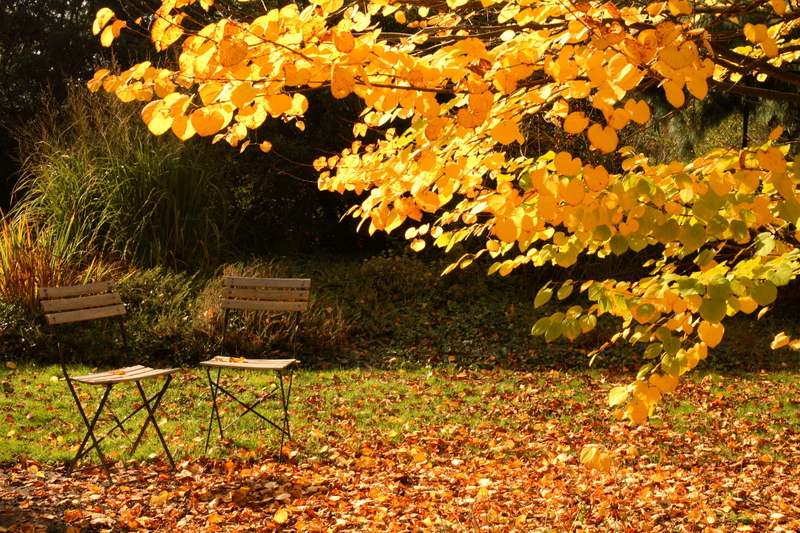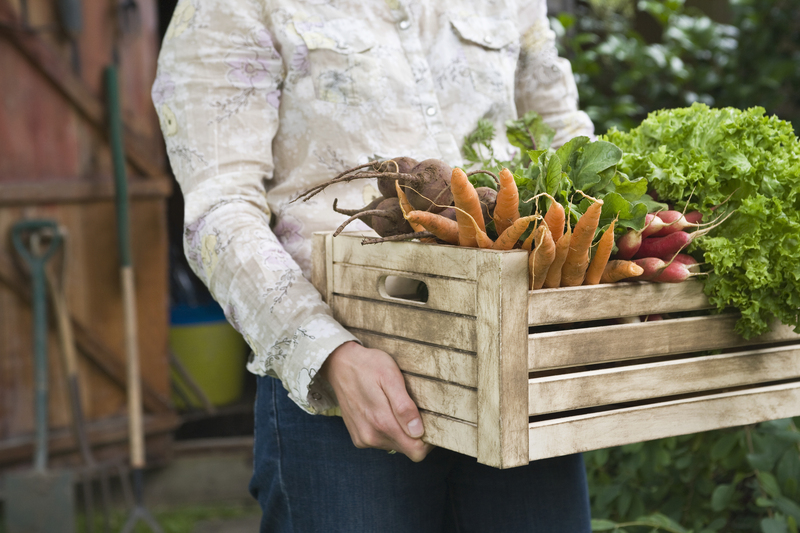Design a Garden Space That Inspires Junior Landscapers
Posted on 16/09/2025
Design a Garden Space That Inspires Junior Landscapers
Are you ready to spark curiosity and green thumbs in young minds? Designing a garden space that inspires junior landscapers is more than digging in the dirt--it's about creating an engaging, educational, and fun outdoor environment. This comprehensive guide explores garden designs that nurture the creativity and knowledge of kids, encouraging them to become passionate landscape enthusiasts.

Why Create a Garden Space for Young Landscape Enthusiasts?
Children are natural explorers, and a well-designed garden can be a living classroom. By integrating playful elements with learning opportunities, a garden for junior landscapers grows more than just plants--it cultivates responsibility, problem-solving skills, and a lifelong love for nature.
- Hands-on Learning: Gardens stimulate curiosity and teach biology, ecology, and nutrition.
- Physical Activity: Tending a garden keeps children active and healthy.
- Sensory Exploration: Fragrant flowers, textured leaves, and flavorful fruits provide rich sensory experiences.
- Social Skills: Group gardening projects foster teamwork and communication skills.
Key Principles to Design a Garden Space for Kids
To design a garden space that truly inspires young landscapers, blend education, creativity, safety, and accessibility. Here's what to consider:
1. Prioritize Safety and Accessibility
Safety is non-negotiable when building gardens for children. Paths should be smooth and wide enough for wheelbarrows, strollers, or even small wheelchairs. Avoid toxic plants and ensure all garden tools are safe and age-appropriate.
- Use non-toxic, rounded-edged plants and mulch
- Install soft-surface pathways such as bark, grass, or rubber mulch
- Provide low raised beds for easy reach
- Ensure proper Sun-shade balance for comfort during play
2. Focus on Interactive Spaces
Young landscapers thrive on interaction. Incorporate elements they can touch, observe, smell, and taste.
- Edible Gardens: Grow strawberries, cherry tomatoes, peas, and herbs for a taste-filled adventure.
- Sensory Paths: Create walkways with different textures using pebbles, logs, or low-growing thyme.
- Pollinator Patches: Plant flowers that attract bees and butterflies for up-close wildlife experiences.
3. Encourage Imagination and Creativity
Spark imagination with themed garden spaces. Let children dream and invent stories while interacting with playful landscapes.
- Fairy and Dinosaur Gardens: Include small figurines, fairy houses or dino prints for pretend play.
- Art Spaces: Set up outdoor easels or mosaic stepping stones to blend art and horticulture.
- DIY Zones: Allocate an area for building bug hotels, decorating pots, or constructing mini teepees from bean poles.
Selecting the Best Plants for Junior Landscapers
Botanical choices matter--select plants that captivate attention, endure rough handling, and are easy to maintain. Here's how to curate a junior landscaper's dream garden:
Choose Non-Toxic, Resilient Plants
- Sunflowers: Easy to sow, fast to grow, and dramatic to watch develop.
- Radishes and Carrots: Quick-maturing, rewarding harvest for young gardeners.
- Sensory Herbs: Mint, lavender, and basil offer scent and flavor.
- Nasturtiums: Edible leaves and bright, cheerful flowers.
- Marigolds: Insect-friendly and robust, perfect for small hands.
Introduce Native and Pollinator-Friendly Plants
Native plants support local wildlife and require less maintenance--ideal for young caretakers. Encourage fascination with the life cycles of butterflies and bees.
Design Ideas to Inspire Junior Landscapers
1. Create Miniature Garden Worlds
Miniature garden scenes inspire kids to get involved. Choose shallow containers or a corner plot for fairy gardens, dinosaur landscapes, or pirate islands. Encourage children to design, plant, and decorate these worlds. Add tiny houses, painted rocks, or figures for storytelling.
2. Construct Raised Beds and Container Gardens
Raised beds make gardening accessible and manageable. Use wooden frames, recycled crates, or colorful containers. Label each plot with plant names and let children personalize their space with signs and decorations.
- Divide raised beds for different themes (pizza garden, butterfly garden, snack garden)
- Encourage children to track plant growth with journals or photos
3. Build a Compost Area
Composting teaches sustainability and the importance of recycling organic waste. Design kid-friendly compost bins and guide young landscapers through adding kitchen scraps, yard waste, and observing decomposition. Create posters or charts to illustrate the composting process.
4. Add Water Features for Exploration
Small, shallow ponds or birdbaths attract frogs, birds, and insects, enhancing observation and ecosystem learning. Ensure all water features are safe and shallow. Include stones and logs for perching wildlife and temporary waterfalls for sound and movement.
5. Integrate Play Structures
Combine gardening with active play by integrating stepping stones, tunnels formed from arching peas or beans, and willow domes. These create inviting spaces for adventure and movement within the garden.
- Bean teepees
- Log balance beams
- Sunflower forts
Teaching and Nurturing Young Gardeners
A garden space that inspires junior landscapers is most effective when paired with supportive mentorship and interactive projects.
Encourage Garden Journaling
Gardening journals foster observation and communication skills. Encourage entries on plant growth, weather patterns, wildlife sightings, and personal reflections. Use drawings, pressed leaves, and photos to personalize each journal.
Incorporate STEM and Art Elements
- Math: Measure plant growth, count seeds, and calculate planting intervals.
- Science: Explore plant life cycles, compost biology, and weather impacts.
- Technology: Document progress with digital photos and create online plant diaries.
- Art: Sketch plants, paint garden signs, and make creative plant markers.
Host Garden Challenges
- Fastest Growing Plant contest
- Best Container Design competition
- Wildlife Spotting scavenger hunts
Celebrate achievements with garden parties, photo displays, and produce tasting sessions to reinforce pride and joy in their green accomplishments.
Maintenance Tips to Keep Kids Engaged
Long-term enthusiasm requires ongoing engagement. Keep junior landscapers motivated with these practical tips:
- Set up a regular gardening schedule so kids know when to expect hands-on time.
- Rotate garden tasks to ensure variety--offer watering, weeding, harvesting, and art activities.
- Introduce seasonal projects such as bulb planting in fall, spring seed sowing, or building birdhouses in winter.
- Visit local botanical gardens, farms, or plant nurseries for new inspiration.
- Update the garden each year based on interests: introduce a vegetable patch, sensory maze, or butterfly waystation.
Garden Tools and Resources for Young Landscapers
Supplying child-friendly tools and accessible resources empowers kids in their gardening adventures. Choose lightweight spades, hand trowels, and gloves sized specifically for children. Incorporate illustrated gardening guides, local library books, or digital resources tailored to young learners.
- Sturdy, brightly colored tools help prevent them from getting misplaced.
- Gardening aprons or tool belts keep essentials handy.
- Seed packets with child-friendly instructions foster independence.
- Labels and weatherproof markers help kids track and identify their plantings.

Inspiration from Community Gardens and School Projects
Observe how community gardens and school gardening projects engage young landscapers. Many programs have raised beds, pollinator habitats, outdoor classrooms, and compost projects. These spaces serve as blueprints for your backyard or neighborhood kid-friendly garden, providing new ideas for seasonal plantings, themed plots, and collaborative activities.
Partnering with Local Experts
- Invite local horticulturists or garden club volunteers to share demonstrations or workshops.
- Coordinate with local wildlife organizations to install birdhouses or insect hotels.
- Encourage neighbors and family members to participate for a sense of shared achievement and stewardship.
Conclusion: Cultivating Tomorrow's Landscape Leaders
Designing a garden space that inspires junior landscapers goes beyond sowing seeds; it's about *sowing the seeds of curiosity, stewardship, and creativity*. Thoughtfully crafted gardens empower kids to explore, experiment, and fall in love with the outdoors. By prioritizing safety, hands-on learning, sensory stimulation, and personal expression, you're cultivating more than just plants--you're nurturing tomorrow's landscape architects and environmental advocates.
*Start with small projects, listen to children's ideas, and be ready to witness the magic that unfolds when young minds connect with nature. Your garden might just become the inspiring space where a lifelong passion for the living world begins.*

